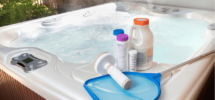If you’re hoping to give your home a stunning makeover that will have a huge impact, but you don’t have a lot of money or time to invest, knowing wallpaper removal can be the perfect solution! It can help you achieve a beautiful, fresh look in your home without breaking the bank. In this guide, you’ll find all the tips, tricks and tools you need to get started on your transformation.
Preparing the Room
Before you start removing the wallpaper, it’s essential to make sure that the room is properly prepared. Remove any furniture and other items that might be taking up space, and use a mild soap solution to give the walls a thorough clean. Once the walls are clean, use a scoring tool to break the wallpaper’s top layer. This will make it easier to remove the wallpaper later.
Removing the Wallpaper
Now that the room is ready, you can begin to remove the wallpaper. Using a putty knife, start loosening the edges of the wallpaper and pull it off in sections. If the wallpaper is not coming off easily, it is recommended to use a steamer or a wet rag to help loosen the adhesive. If necessary, you can use a wallpaper removal solution to help make the process easier.
Removing Adhesive
After the wallpaper has been completely removed, some of the adhesive may still remain on the walls. To deal with this, use a wallpaper stripper and spread it over the wall. Wait a few minutes before scraping the adhesive off with a putty knife. It is important to be gentle when scraping off the adhesive, as it can damage the walls if not done properly.
Patching the Walls
If there are any holes or dents in the walls, you need to fill them in with a joint compound or spackle. Be sure to let the compound dry for at least 24 hours, and then use a fine-grit sandpaper to sand it down and make it smooth. After this, you can start painting over it. To get the best results, use a high-quality sealant to seal any cracks or crevices.
Cleaning the Walls
After you’ve removed the wallpaper and adhesive, it is essential to give the walls a deep cleaning. Use a mild detergent and warm water to make sure that all the residue is removed, and the walls are completely clean. This is an important step to make sure that you achieve the best results. Once the walls are clean and dry, you can move onto the next step.
Priming the Walls
Before you can even begin to think of painting the walls, you need to make sure that they are properly primed. Primer will help the paint adhere to the walls, making it last longer and look better. When priming the walls, use an oil-based primer and make sure the primer has dried completely before adding the paint. Be sure to use a high-quality primer to ensure the best results.
Painting the Walls
Now that your walls are primed and ready, you can start painting them! Choose a color that will bring the room to life and begin painting. To make sure you get the best results, use a high-quality paint and make sure to let each coat dry completely before adding the next. If you’re feeling adventurous, you can even mix and match colors to create a unique look.
Finishing Touches
Once the painting has been finished, it’s time to add the finishing touches. Hang artwork, add accent pieces, and arrange furniture to complete the look. Add some plants, rugs, and other décor pieces to add a personal touch to the room. You can even incorporate wall hangings, like tapestries or wall paintings, to give the room an extra special touch.


